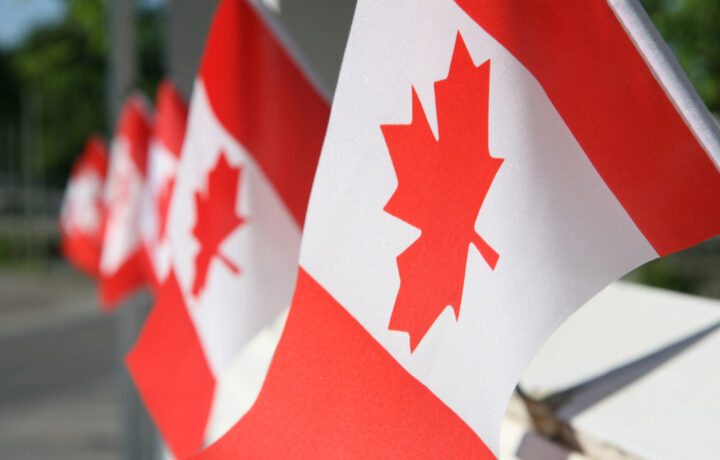While U.S. military spending tends to overshadow Canada’s much smaller defense budgets, the Canadian Department of National Defence (DND) has an ambitious agenda to replace a host of aging equipment in the coming years. Ottawa’s efforts include new ships for the Royal Canadian Navy (RCN), new aircraft for the Royal Canadian Air Force (RCAF), and upgrades to aerospace warning capabilities.
“The scale of our re-investment in the Canadian Armed Forces is significant,” the DND said. “This long-term investment is meant to modernize, renew and restore this vital national institution and provide our women and men in uniform with the modern tools they need to succeed in – and return home safely from – operations.”
NEW FRIGATE
For what it calls “the largest and most complex shipbuilding initiative in Canada since World War II,” the DND plans to spend up to C$60 billion (US$44 billion) for 15 new Canadian Surface Combatant (CSC) frigates to replace the Halifax-class frigates and the retired Iroquois-class destroyers.
“With these ships, the RCN will have modern and capable vessels to monitor and defend Canada’s waters, continue contributing to international naval operations for decades to come, and rapidly deploy capable naval forces worldwide,” the DND said.
Lockheed Martin Canada leads the design team, which also includes BAE Systems, CAE, L3Harrs Technologies, MDA and Ultra Electronics. Irving Shipbuilding will build the vessels at its Halifax shipyard. Ship construction is slated to start in 2024, and deliveries are expected to begin in the early 2030s.
NEW PLANES
To replace the RCAF’s fleet of CF-18 fighters, Canada agreed in January 2023 to buy 88 Lockheed Martin F-35A Lightning IIs for C$19 billion. Deliveries are scheduled to begin in 2026.
While many Canadian companies have already participated in developing and producing the F-35 for the United States and other countries, the DND’s purchase is expected to yield additional opportunities for its domestic defense industry, including in maintaining the stealthy, software-intensive jet for Canada and other users.
For the Strategic Tanker Transport Capability project, which will cost C$3.6 billion, the DND intends to replace the RCAF’s CC-150 Polaris refueling and transport aircraft by acquiring four new Airbus A330 Multi Role Tanker Transport aircraft and converting five used A330-200 aircraft. All nine planes will receive the CC-330 Husky designation.
“This new aircraft will improve the flexibility, responsiveness, interoperability with allied nations, communications security, and self-protection of the Royal Canadian Air Force’s current fleet,” the DND said.
For the Canadian Multi-Mission Aircraft project, Canada tentatively plans to purchase the Boeing P-8A Poseidon aircraft to replace the RCAF’s CP-140 Aurora maritime patrol fleet. However, Montreal-based Bombardier hopes that an aircraft based on its Global 6500 business jet will ultimately win out over its U.S.-made competitor.
Canada expects to spend more than $5 billion on the CP-140’s successor, which will perform anti-submarine warfare, anti-surface warfare, and command, control, communications, computers, intelligence, surveillance and reconnaissance (C4ISR) missions.
NORAD UPDATE
To modernize its portion of the North American Aerospace Defense Command (NORAD), the DND announced in June 2022 that it will spend C$38.6 billion over 20 years. Jointly operated by the U.S. and Canada, NORAD uses a network of sensors to look out for potential attacks on North America.
“In the context of a significantly changing global security environment, further demonstrated by Russia’s unprovoked, unjustifiable and illegal invasion of Ukraine, and with climate change increasingly impacting our defence and security, as well as the rapid development of new weapons technology such as hypersonic weapons and advanced cruise missiles, there is a pressing need to modernize Canada’s NORAD capabilities, and Canada’s NORAD modernization plan will ensure that this occurs,” the DND said.
The NORAD effort has many elements, including an Arctic Over-the-Horizon Radar system, which will monitor the area from the Canada-U.S. border to the Arctic Circle, and the Polar Over-the-Horizon Radar system, which will watch “beyond the northernmost approaches to North America, including the Canadian Arctic Archipelago.”
CHALLENGES
To achieve its modernization goals, the DND will have to overcome several challenges, including fiscal constraints. Already facing criticism from NATO allies for not spending enough on defense, the Canadian government is reportedly looking to cut almost C$1 billion from the DND’s annual budget.
To complicate matters further, Canada’s procurement system is considered overly bureaucratic and understaffed, and the country’s small defense industry often cannot meet the government’s preference for Canadian-made equipment.
Adding to the uncertainty is the defense policy review that the government announced in April 2022 to determine whether Canada’s armed forces are adequately sized, funded and equipped in light of Russia’s invasion of Ukraine. The review was supposed to be completed swiftly but remains unfinished a year and a half later. A DND spokesperson told ClearanceJobs.com on Sept. 29 that the policy update will be released “in due course.”




